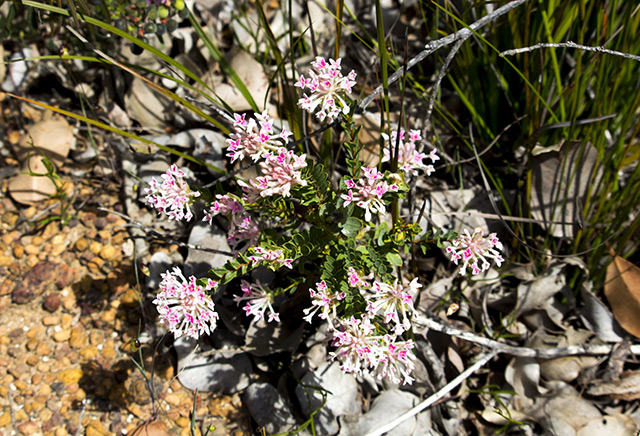Scientists look at anti-cancer ability of compound in great burnet herb used in Chinese Medicine
02/15/2020 / By Evangelyn Rodriguez

The flowering plant scientifically known as Sanguisorba officinalis (great burnet) is a common Chinese herbal medicine used to stop bleeding and reduce inflammation. Research suggests that it has great therapeutic potential due to its broad range of biological properties, which include anti-inflammatory, antioxidant and anti-cancer properties.
In a recent study published in the journal Chinese Medicine, Chinese researchers explored the molecular mechanism behind great burnet’s anti-cancer activity against colorectal cancer cells. They found that one of its active components can stop the Wnt/B-catenin signaling pathway, which is involved in cell proliferation and self-renewal. When dysregulated, this pathway contributes to the development of diseases like colorectal cancer.
A compound in great burnet targets genes involved in cancer
To investigate the ability of great burnet to inhibit the growth of cancer cells, the researchers first extracted one of its main bioactive compounds, 1,4,6-Tri-O-galloyl-B-D-glucopyranose (TGG). TGG is classified as a tannin, an organic subtance with astringent properties often found in the galls and barks of various plants. They tested the anti-cancer activities of TGG by treating mouse embryonic fibroblasts (NIH3T3) and human colon adenocarcinoma cells (HT29) with it.
Using different assays and biochemical techniques, the researchers measured the expression levels of relevant proteins and detected their presence in the cytoplasm and nucleus of both cell lines. They also conducted transcriptomic profiling – a method used to understand the genetic regulation of a particular cell type – to understand the mechanism by which TGG exerts its effect on the Wnt/B-catenin signaling pathway.
Wnt/B-catenin signaling is a crucial component of cell development. It helps direct cell proliferation, cell component organization and cell differentiation. Because of its heavy involvement in critical cellular events, mutations in this pathway are often linked to birth defects and serious diseases like cancer.
Studies have shown that the excessive activation of the Wnt/B-catenin signaling pathway is involved in the development of colorectal cancer. In their study, the researchers found that TGG from great burnet can inhibit this signaling pathway by down-regulating the expression of B-catenin. B-catenin is a transcriptional activator that enables the expression of Wnt target genes, which are known to play various roles in the survival and proliferation of different types of cancer.
Besides inhibiting the Wnt/B-catenin signaling pathway, the researchers also found that TGG up-regulated the levels of cleaved caspase-3 and cleaved PARP, as well as the ratio of Bax/Bcl-2, which they believe explains the death of HT29 cells. Both cleaved caspase-3 and cleaved PARP are markers of apoptosis, while a high ratio of Bax/Bcl-2 negatively affects tumor progression and aggressiveness.
Based on these findings, the researchers concluded that TGG in great burnet can be developed into a potent anti-colorectal cancer agent.
The medicinal uses of great burnet
Great burnet is a perennial herb that can be found in parts of Europe and Asia, particularly in China and Japan. When harvested in the spring just before it comes into flower, its young leaves and flower buds can be consumed either raw or cooked. The leaves of great burnet can also be brewed as a tea.
The roots of great burnet are highly valued in traditional Chinese medicine (TCM). Besides stopping bleeding, great burnet (or di yu in TCM) is also used to cool the blood and heal wounds by detoxification. Traditional Chinese herbal formulas that include great burnet roots are used to treat hemorrhoids, bloody diarrhea, metrorrhagia (abnormal bleeding from the uterus), metrostaxis (continuous uterine hemorrhage), burns, scalds and boils.
According to modern studies, the roots of great burnet can also be used to make an ointment for eczema. Its leaves, meanwhile, are great for reducing fever. Great burnet can be used as a natural remedy for peptic ulcers, dysentery and bacterial infections caused by Bacillus, Meningococcus, Leptospira and Shigella.
Sources include:
Tagged Under: alternative medicine, anticancer, cancer cures, Chinese medicine, disease treatments, food cures, food is medicine, great burnet, herbal medicine, Herbs, natural cures, natural medicine, plant medicine, remedies, research, TCM
RECENT NEWS & ARTICLES
Herbs.News is a fact-based public education website published by Herbs News Features, LLC.
All content copyright © 2018 by Herbs News Features, LLC.
Contact Us with Tips or Corrections
All trademarks, registered trademarks and servicemarks mentioned on this site are the property of their respective owners.


















